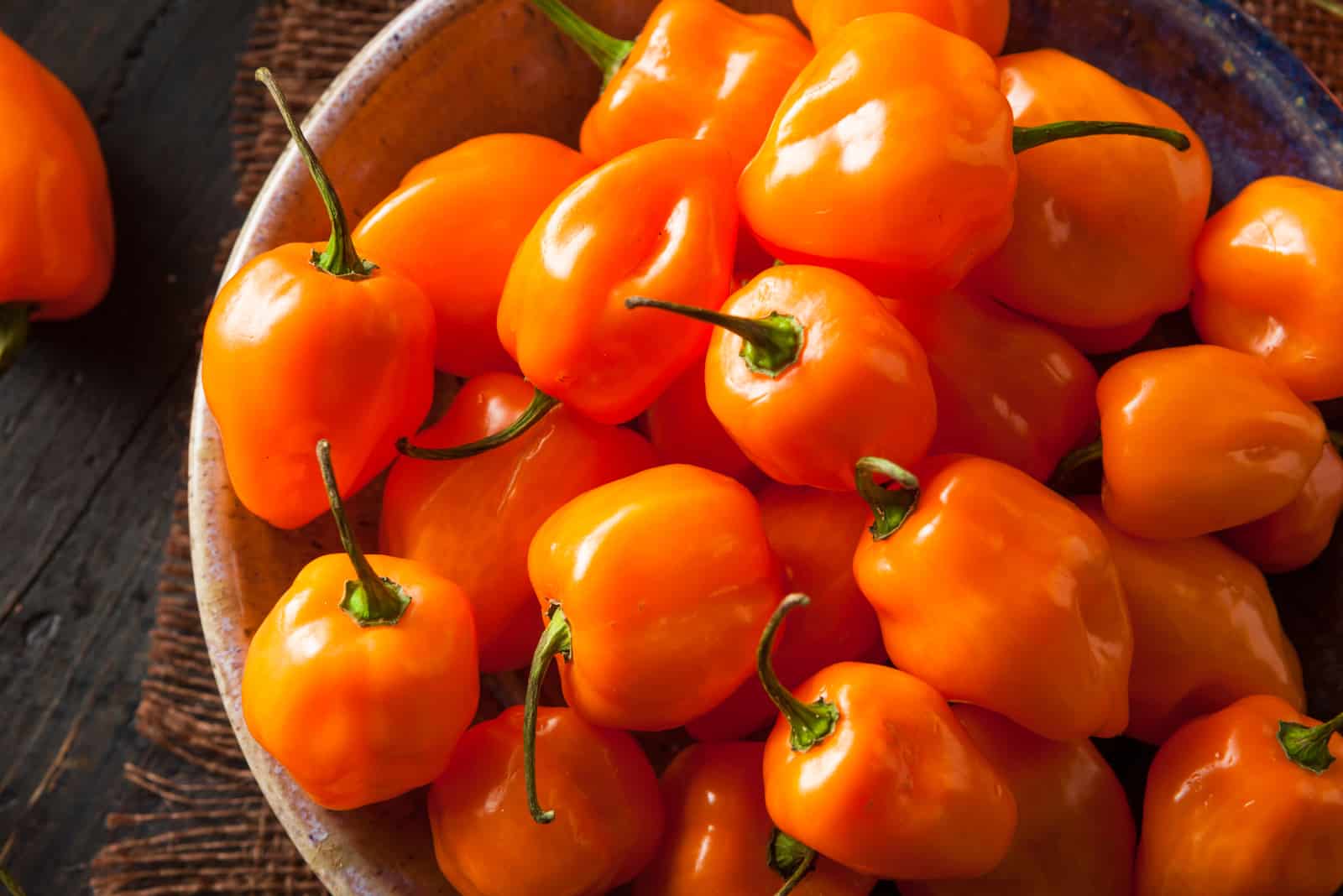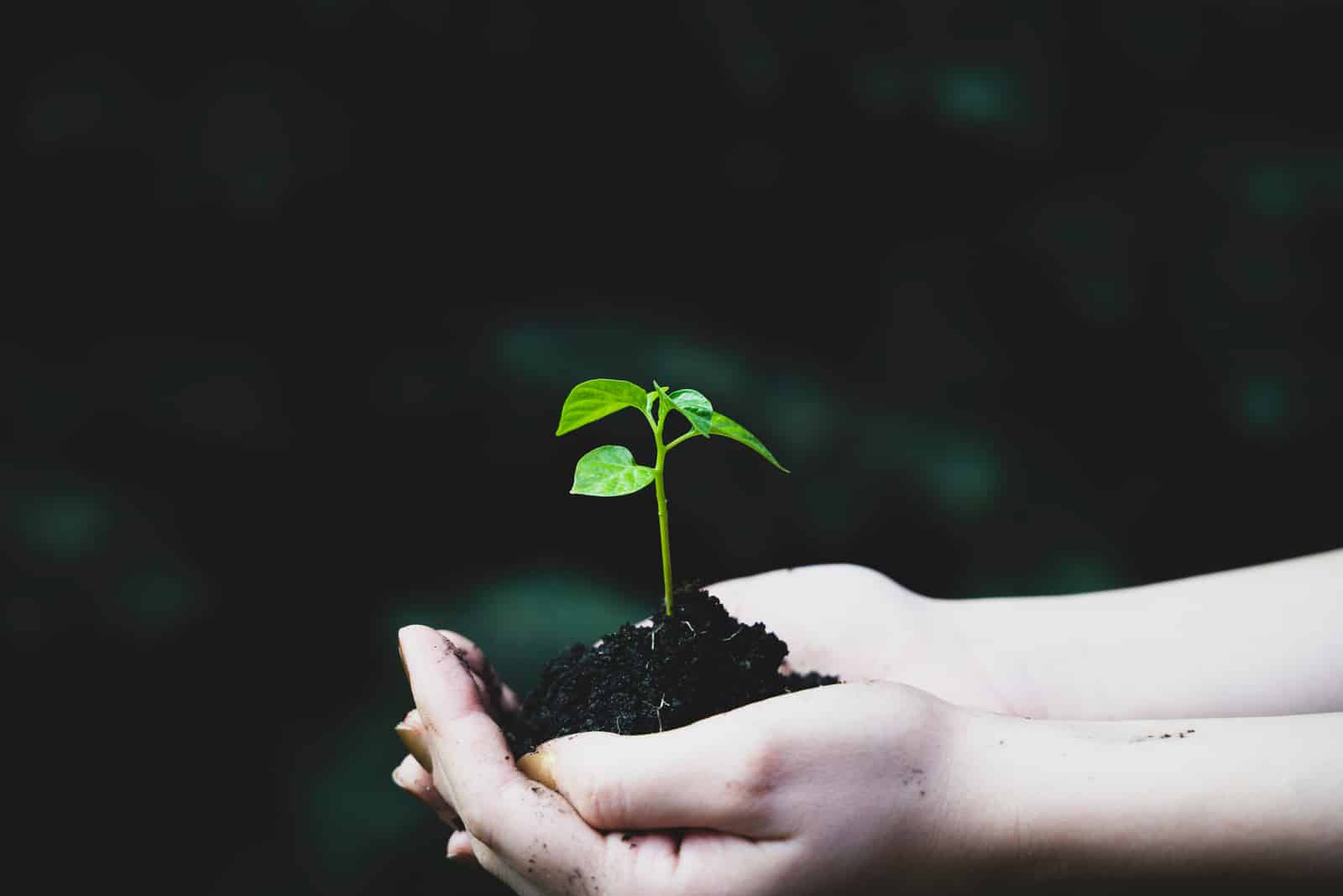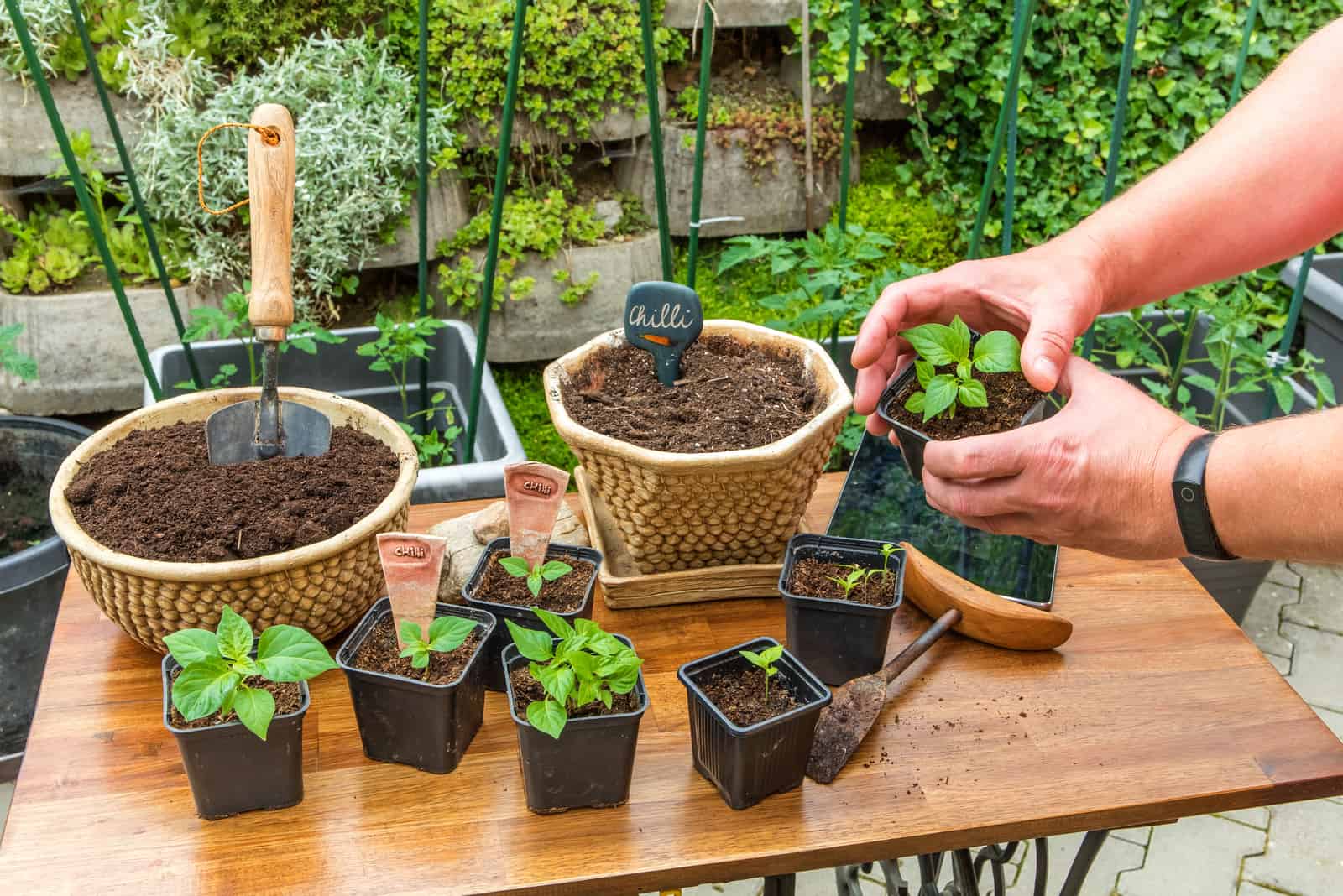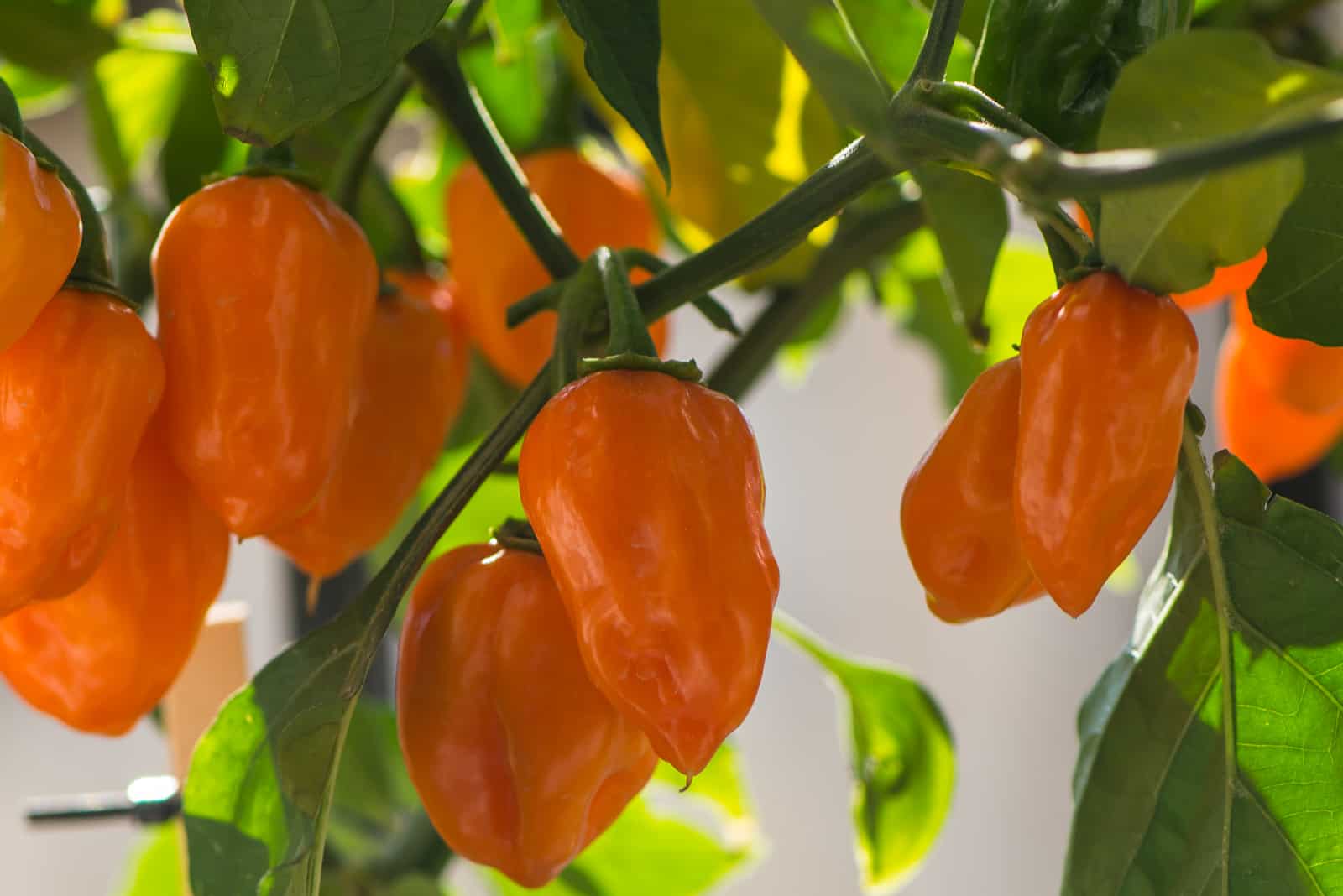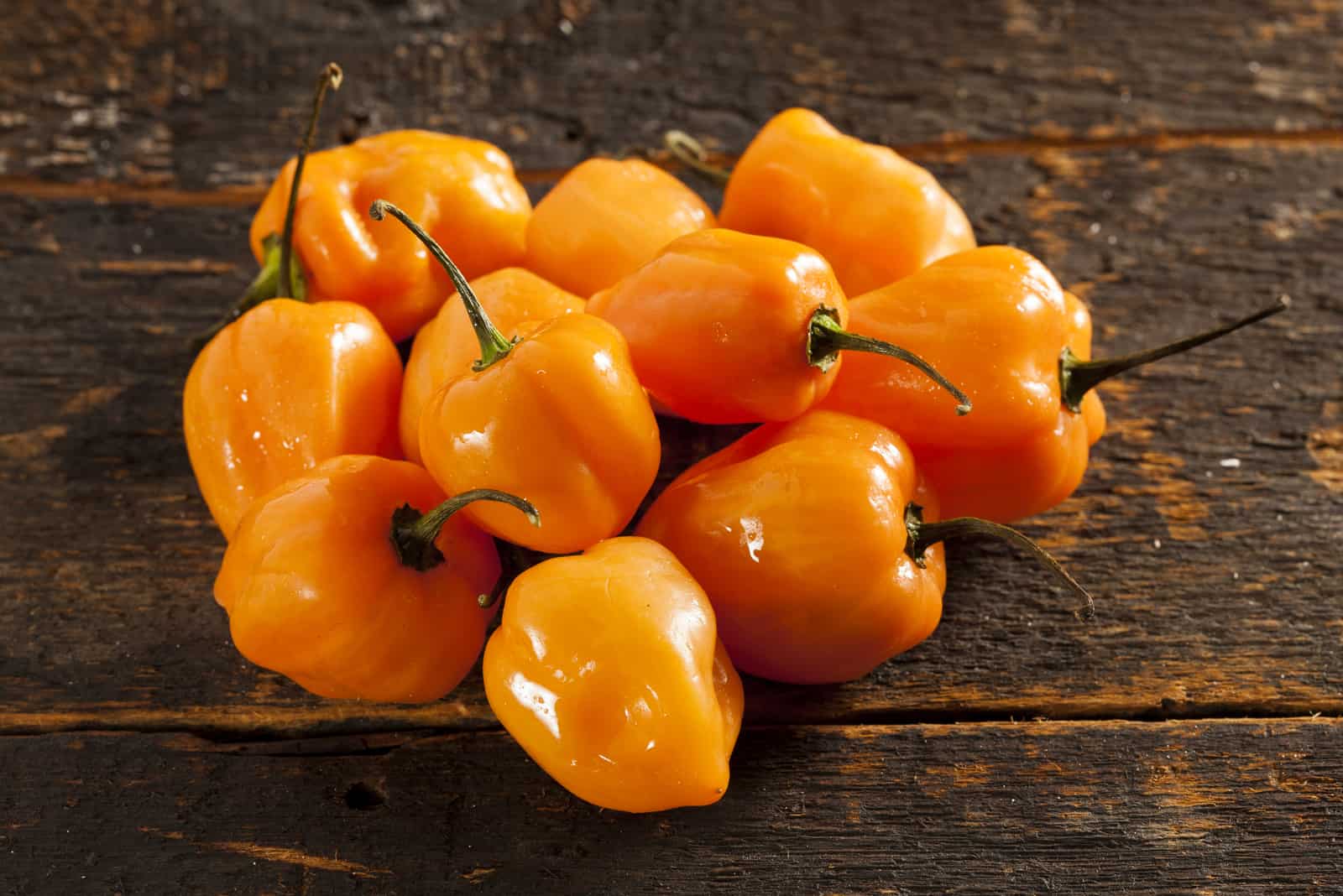If you love hot peppers, then you’ll simply adore the habanero orange!
Perhaps you got tired of the mild jalapeno, and are looking for more excitement.
Well, growing your own orange habanero peppers will be a piece of cake if you follow our care guide. All habanero peppers need is a bit of water and plenty of sunlight, and they will grow like crazy!
However, if you really enjoy salsas and mexican-themed dinners, then you might want to put a little bit more effort into caring for these magnificent peppers.
Our orange habanero care guide will make you a first-class habanero grower in no time.
But first, some general specifics:
[table id=17 /]
Now, let’s get started!
Habanero Orange Pepper Care Guide
I don’t know about you, but I’m so tired of GMOs that I’ve started growing my own vegetables. For all of us who have a taste for spicy food, the habanero is a perfect option for starting a vegetable garden.
It’s easy to take care of this bright orange pepper plant, and what’s more, they will look amazing among all your colorful bell peppers, tomatoes, and cucumbers.
Also, if you’re not so keen on heat, you can always grow yellow habanero peppers, as they have an amazing flavor, and aren’t that demanding.
Light
Just like any other pepper, these chile peppers need full sun to grow big and strong. This means that they need to be exposed to the sun for at least 6 hours a day.
Too little direct sunlight will lead to unsightly, pale, and leggy habaneros. Therefore, if you decide you want to grow orange habanero peppers in the comfort of your own home, you might want to think about getting some grow lights.
If your home is on the south or west side of the building, then you could place your habanero plant inside on the windowsill. This will almost certainly provide your hot pepper with enough sunlight.
However, if your house faces the gloomy north or east, you will need to invest in some grow lights. Just turn them on and your habaneros will thrive in their light.
Only happy plants produce perfect fruit, and in order to keep your plant happy you need to keep it somewhere it can get its minimum of 6 hours of sun exposure a day.
Water
Orange habanero chili peppers have moderate water requirements.
They should be watered thoroughly and deeply, but not too often. If you water them too frequently they will get clogged with water, which has the potential of damaging their root system and causing fungal infections. This will slow down the production of fruit.
Almost certainly the biggest problem with overwatering habaneros is that their taste can become bitter.
To avoid this, water your baby orange habanero only when the soil is dry. Professionals advise watering these hot peppers no more than twice a week, and when you see fruit appearing you should reduce the watering even more.
Less water leads to a hotter taste, but underwatering leads to a dry and dead plant, so meet the water needs of this chili pepper somewhere in the middle.
Climate And Temperature
Habaneros are grown all over Central and South America, especially in Mexico, so you know that they love hot weather.
Something on which all experts agree, is that you should only transplant orange habaneros outside after all danger of freezing has passed.
You should wait around 4 weeks after the last frost to plant your orange habaneros outside.
They grow best when the temperature is somewhere between 70 and 80°F (21 and 26°C). Temperatures below 60°F (15°C) or higher than 90°F (32°C) can cause blossom drop, and without flowers the plant cannot produce any fruit.
So, if you want your hot sauce to have both a fruity taste and significant spice, you need to be careful about the temperature requirements.
Something you should take into consideration is making an inside vegetable garden for all your habaneros, jalapeno peppers, and ghost peppers, because there is no danger of frost indoors and you can easily control the temperature.
Soil And Fertilizer
Orange habanero loves neutral or slightly acidic soil (pH level between 6.2 and 7.0) rich in nutrients and organic content, which helps with drainage.
Speaking of drainage, the soil needs to be well-drained before planting the habanero. It also has to be well-draining so that it doesn’t retain too much water, as this leads to fungal diseases.
However, the habanero orange also needs moisture, so it wouldn’t be a bad idea to add some humus or compost to your regular potting mix, which will improve the water retention and balance it, making it a perfect new home for your habanero pepper.
These are some of the hottest peppers out there, and a great way to improve their growth is to mulch the ground where these habaneros will be grown. This will increase the temperature of the soil, which this pepper plant will love, and retain moisture so you don’t have to water the plants very often.
Fertilization
When fertilizing, don’t rely solely on nitrogen fertilizers. These will support the rapid growth of plants, but they will not have enough of the other nutrients needed for producing flowers and fruit.
Taking this into consideration, you will want to find a fertilizer that has the ideal ratio of nitrogen, potassium, and phosphorus for your plant’s needs.
During the early growth stages, you will want to use a fertilizer with more nitrogen (for example, 11-3-8) to help the plant grow sturdy, but then you’d want to switch to a lower nitrogen fertilizer so that the flowers don’t drop and you don’t lose the harvest.
Fertilizers are used during the growing season, and if you want to make sure you don’t over-fertilize, you can apply fertilizer once a month to rest assured that you won’t cause your peppers any fertilizer burn.
Transplant
There are two ways to grow habanero orange: you can buy a ready transplant in the nursery or you can grow it from its hot pepper seeds in your home.
Whichever option you chose, eventually you’d have to transplant the habanero.
The ideal time of transplantation is when the soil temperature reaches 65-70°F (18-21°C). Plant the pepper plant 0.25 inches (0.6 cm) into a well-draining soil rich in nutrients.
It is important to give habaneros some space to grow, which is why each plant should be around 18-24 inches (46-61 cm) apart. It would also be a good idea to separate the rows, so be sure to leave 24-36 inches (60-90 cm) between the rows.
The 4 Growth Stages Of A Habanero Orange
In this section, you will learn about the growth cycle of a habanero orange, and who knows, you may even be inspired to grow one all the way from seed to fruit!
Growing habaneros from seed is not that difficult, so you shouldn’t be scared to add it to your wishlist.
There are several stages of growth in the life of a pepper plant, and understanding them can help you with growing your very own habanero.
Seed germination
Seed germination is the first stage. It is best to plant habaneros indoors in mid-January or February because they have a long growing season. Plant the seeds in a well-draining potting mix, always keep the soil moist and the temperature of the soil between 80-85°F (26-29°C), give it enough bright light, and wait for the seedling to appear. This process may take 1-3 weeks.
Plant Growth
After 8 weeks, habaneros are ready to be transplanted outside. However, these chili peppers can have several transplants, so if it’s not too much bother, consider doing just that.
Pollination
The next stage is pollination. After your habanero produces flowers, they need to be pollinated in order for the plant to bear fruit. If you grow your habanero orange indoors or in a greenhouse, you would have to hand-pollinate them, but if they’re already outdoors, then just let the bees do their job.
Ripening
Finally, we come to the most interesting stage: ripening. It usually takes around 110 days for the fruit to ripen, but don’t be afraid you’ll miss it! The fruit changes its color to a beautiful shade of orange, so you can just sit back and wait for the color to signal they’re done.
It’s good to know when you should pick habanero peppers, as one plant keeps producing fruit until it dies, which can increase your yield.
Fun Facts About Orange Habaneros
There are so many interesting things about the habanero orange that we don’t know where to start!
• The name habanero means “from Habana”, or rather “Havana” in English.
• The largest producer of all habaneros, not just the habanero orange, is Mexico, and the Yucatán peninsula to be more specific.
• What makes the orange habanero hot is capsaicin, which is usually found around the seeds.
• Chocolate habanero is a cultivar of habanero orange. It has twice as much heat as the habanero orange, is larger, and has a beautiful chocolate color, hence the name.
These are just a few interesting facts about habaneros, but did you also know that they are perfect companions for scotch bonnet, cayenne, and aji peppers?
They will introduce red and orange color to your garden, and make it a truly magnificent sight to see!
Orange habaneros can get spicy, but if you can handle the heat, you should examine habanero Scoville ratings, and who knows, perhaps you find one that goes quite nicely with the habanero orange.
History Of The Habanero Orange
Habanero peppers come from South America, specifically the Amazon, and from there they spread all around the entire world.
It is safe to say that the habanero is a Spanish heirloom, and they are the ones that introduced it to the entire world. The Spanish spread it everywhere, even to China, and in the 18th century it was thought that it even originated from China, which is why it is called “the Chinese pepper”, or Capsicum chinense.
Another interesting thing about the habanero orange is that it once entered the Guinness World Records as the hottest pepper in the world, but was soon replaced by the ghost pepper and Carolina Reaper.
Application Of Habanero Orange
Habanero orange is perfect for all kinds of recipes. You can use it raw or cooked when you’re roasting meat, grilling vegetables, or simmering and sauteing stews, curries, and even soups.
You can grind it or pickle it, and some even put it in their vodka. The possibilities are endless!
Personally, I’m not a fan of spicy ingredients in my sweets, but if you are, then you will love orange habanero marmalade. You can either buy it or make your own.
If you want to make your own, then check out the recipe below.
Habanero Orange Marmalade Recipe
Bon appetit!However, my favorite is definitely hot sauce or salsa. If you have these in your cupboard, then it’s party time all the time!
FAQ
Even though this article covered the basics about the habanero orange, we are still left with some unanswered questions.
How hot is the orange habanero?
Red habaneros are much hotter than orange ones. For instance, the Red Savina habanero has 557,000 SHU, while orange habaneros have between 100,000 and 350,000 SHU.
How many calories are in a habanero?
One serving (1.59oz or 45g) of habanero contains 20kCal. It also contains 0.1oz (3g) of carbs and 0.03oz (1g) of protein. It is rich in vitamins A and C.
What are the benefits of orange habanero?
Orange habanero contains capsaicin, which may help prevent cancer. It also has vitamins A and C, which are antioxidants and decrease the risk of cancer.
Capsaicin found in hot peppers also has anti-inflammatory effects and can help with headaches and arthritis. It also fights off certain inflammatory reactions that cause premature aging.
Habanero orange is also thought to be beneficial for cardiovascular diseases because it may lower cholesterol levels.
Finally, capsaicin found in hot peppers is good for balancing insulin levels, and eating hot peppers such as habanero orange can decrease the risk of diabetes.
If you love hot peppers, it is good to know that they have many benefits, but you should keep in mind that more research needs to be done before we know anything for certain. However, enjoying habaneros will do you no harm as long as you keep them away from your eyes!
Summary
What else can we do but wish you good luck on your new vegetable gardening adventure? The Habanero orange doesn’t require too much care, so you shouldn’t need too much luck!
Just remember that it likes warm temperatures, a lot of sun, and a little bit of water. Give it everything it requires, and it will give you that burning sensation we all love from our salsas and hot sauces.
Until next time!
Like this post? Share or pin it for later!

